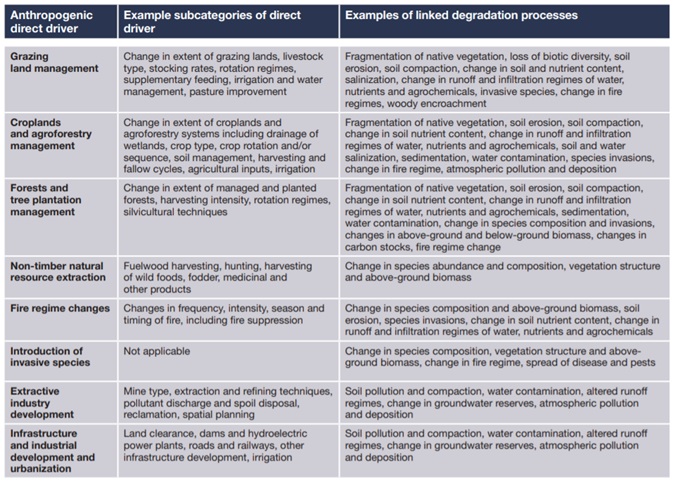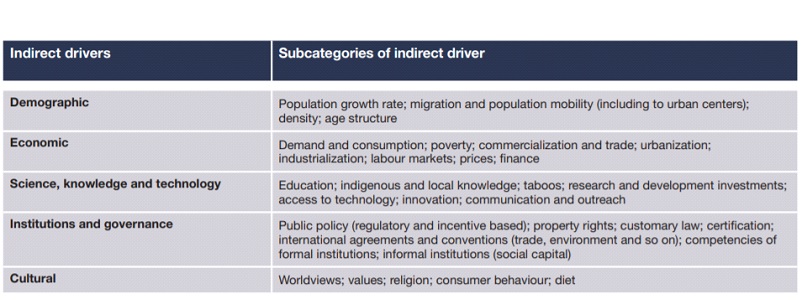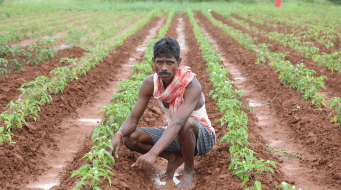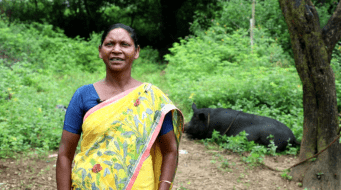by Anagha Gore
Land Degradation and Desertification – A Background
Land resources are vital in supporting physical, social, and economic infrastructure and activities. Functions such as agriculture, watershed management, forestation, mining, transport, and development depend on the quality and certain attributes of the land. The protection and maintenance of land resources is crucial for the continued support of terrestrial ecosystems and the essential services they provide. However, activities such as agriculture, overgrazing and deforestation degrade the productivity and quality of the land. Any of the following three features mark land degradation:
- A reduction or loss of its biological productivity,
- Ecological integrity,
- Value to humans (IPCC, 2019)
Multiple natural factors such as earthquakes, heavy rainfall, volcanic eruptions, and human influences such as overgrazing and deforestation drive the process of land degradation (Appendix, Tables 1 and 2). Moreover, expansion of the land area under cultivation, unsustainable land management practices and the strain of increasing population growth on land are major human drivers of climate change (Mirzabaev & Wu, 2019). Currently, 38% of the world’s human population inhabits drylands, and desertification adversely affects over 2.7 billion people because they are mostly dependent on agriculture, which is quite susceptible to the effects of climate change. These populations are projected to increase by 43%, up to 4 billion by the year 2050, due to high population growth rates in drylands. Approximately 90% of the human population in drylands are those that live in developing countries (Montanarella et al., 2018). In India, 32% of the land is considered degraded and 25% of it is undergoing desertification (Ministry of Environment, Forests and Climate Change, 2020).
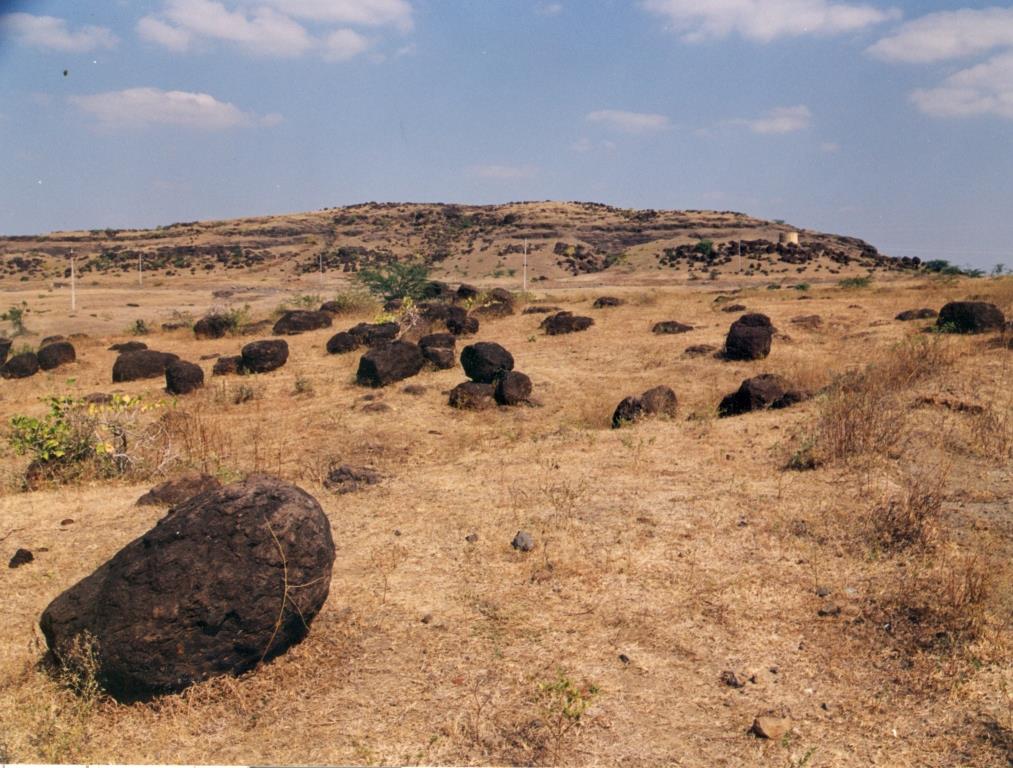
Desertification is usually a result of a multitude of interconnected drivers that cannot be isolated (Montanarella et al., 2018). Desertification occurs when anthropogenic activities together with a drying climate lead to a loss of vegetation and biological productivity in dryland areas. Climate change exacerbates this process through extreme temperatures, extreme rainfall and shifting rains, sea-level rise, warming and drying trends, and intensifying cyclones (Barbosa & Olsson, 2019). Projections of climate change indicate a possibility of increased land degradation and an increase in the number of drought-affected regions (World Meteorological Organization, n.d.).
Desertification and Climate Change- THE GLOBAL LAND OUTLOOK REPORT
Just as climate change drives desertification, the process of desertification also alters the local climate through feedback pathways such as changes in surface albedo, sand and dust aerosols, changes in vegetation and greenhouse gas (GHG) fluxes, surface temperature, and precipitation (Figure 1). Desertification can drive either the cooling or the warming of local and regional climate through GHG emissions, reduction in carbon uptake rate, and a reduction in the carbon storage capacity of ecosystems (Mirzabaev & Wu, 2019).
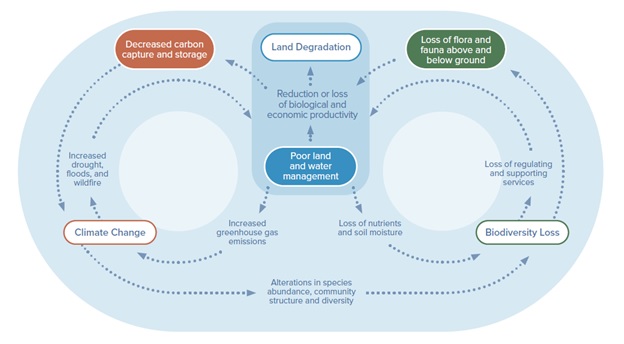
Published in 2022 by the United Nations Convention to Combat Desertification (UNCCD), the Global Land Outlook Report (GLO2) marks the importance of natural capital in terms of its economic valuation at more than half of the world’s GDP. It outlines pathways to be taken urgently to combat land degradation and desertification at the international, national, and subnational levels through case studies and recommendations. It also reiterates the Land Degradation Neutrality (LDN) targets which encourages countries to achieve net gain and attain no net loss of land-based natural capital.
ACTION POINTS FOR INDIA from the GLO2
I. Combining all National Action Plans
Integrating similar objectives siloed under various national plans of India into a single strategy would help “achieve economies of scale…while advancing national development priorities” (UNCCD, 2022).
These plans could include:
- The National Action Plan for Climate Change (NAPCC) and the relevant missions housed within, namely: National Mission for a “Green India” (GIM), National Water Mission, National Mission on Sustainable Habitat, National Mission for Sustainable Agriculture, National Mission for Sustaining the Himalayan Ecosystem, and National Mission on Strategic Knowledge for Climate Change (Government of India, 2008).
- The Nationally Determined Contributions (NDC) is a commitment to the Paris Agreement under the United Nations Framework Convention on Climate Change (UNFCCC) which includes creating a “carbon sink of 2.5 to 3 billion tonnes of CO2equivalent through additional forest and tree cover by 2030” and “enhancing investments in development programmes in sectors vulnerable to climate change” (Government of India, 2016).
- The National Biodiversity Action Plan (NBAP) (MoEFCC, 2008), the Addendum 2014 with its 12 National Biodiversity Targets, and the Action Plan of the Programme of Work on Protected Areas (PoWPA) (MoEFCC, 2012) involve conservation practices, technological measures, and international cooperation to limit biodiversity loss and improve proliferation.
- The National Action Plan on Business and Human Rights (NAP) which is under development as an obligation of India’s endorsement of the United Nations Guiding Principles (UNGPs) on Business and Human Rights adopted in the UN Human Rights Council (UNHRC) (Ministry of Corporate Affairs, 2019). This plan would outline measures of protection for the country against business-related climate change, and mechanisms to hold businesses accountable for “causing, contributing to, or failing to prevent” climate change (UNHRC).
Although this strategy appears simple on the surface, combining these plans and streamlining strategies therein for implementation would maximize outcomes and return on investment while limiting the redundancy of repetitive aims and increasing efficacy in meeting goals.
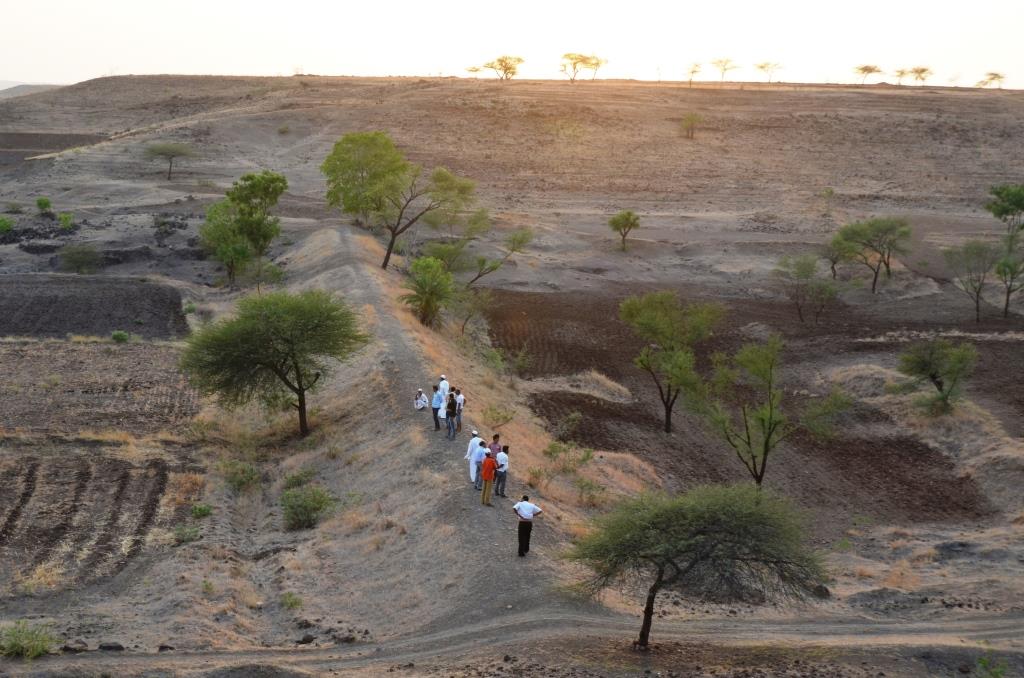
II. Implementing Ecological Restoration Projects and Sustainable Land Management Practices
India has successfully implemented nature-based solutions as preventative or curative countermeasures to environmental issues. However, being home to a population diverse in socioeconomic background, language, culture, tradition, gender, and dependence on forest and other natural resources, India must address the issues of inequities in access to land carefully to achieve its equity goals listed in various national plans. Factors to keep in mind are gender-blindness in designing initiatives, potential intergroup conflicts, sociocultural environments, geopolitical dimensions, historical marginalisation of communities, and the usurpation of land rights that add to inequalities (UNCCD, 2022). Inequalities within the population are being exacerbated further by climate impacts.
Merely restoring land is also not enough as stewardship is an essential part of consistent and continued conservation, as is the fulfillment of community needs. An ideal restoration scenario involves a repaired ecosystem, community governance of land, and the creation of sustainable livelihoods by establishing a mutually beneficial system between the resource and the people. This empowers local community members, encourages them to take ownership of the protection of their land, and engages them in decision-making, planning, and implementation (UNCCD, 2022).
Being primarily agrarian, 70% of India’s rural population depends on agriculture for livelihood (FAO). Agricultural production in India is resource-intensive, limited to regional and seasonal crops, and primarily rainfed, whereas over 20% of the country faces droughts (DTE, 2021). India’s population stands at approximately 1.3 billion today and is expected to see an estimated 17% increase by 2030 (UN, 2015). With increasing uncertainty in the intensity and frequency of precipitation events, sustainable and regenerative agriculture is essential to ensuring food security for the territory.
Sustainable land management practices such as managed aquifer recharge, rangeland rehabilitation through reseeding and community-based grazing management, protection of wetlands, reinstating local tribes as primary caretakers of the land, practicing agroforestry, and reducing forest fragmentation through afforestation are some methods known to be successful (UNCCD, 2022).
CONCLUSION
The planet has already exceeded four out of nine planetary boundaries, namely, biodiversity loss, land-use change, nitrogen and phosphorous cycles, and climate change, which afford humanity a “safe operating space” to ensure continued sustenance. During 2018-2019, 29.7% of India’s total geographical area underwent degradation (Space Applications Center, 2021). Actively pursuing ecosystem protection and restoration programmes and adopting approaches such as Ecosystem-based Adaptation will help reverse this degradation.
According to the UN General Assembly, LDN and combating land degradation, desertification, and drought, is an “effective pathway to accelerate progress towards achieving multiple Sustainable Development Goals by 2030” (UNCCD, 2022). By focusing on achieving the SDG Target 15.3 and committing to LDN, India could accomplish multiple goals outlined by the CBD, the UNFCCC as well as the UNCCD in one fell swoop, albeit spanning decades of hard work and sustained efforts into the future.
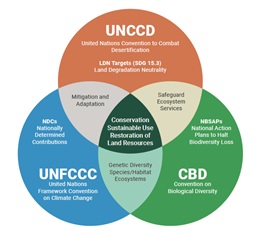
APPENDIX
